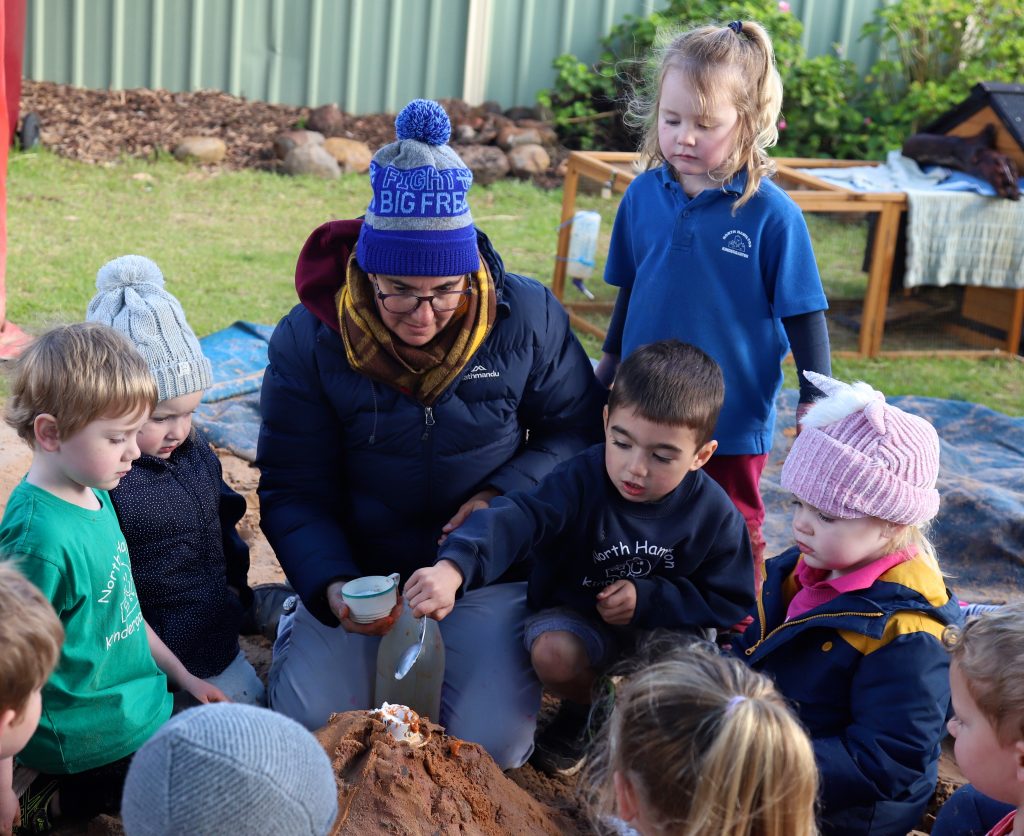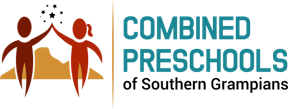Often in smaller kindergartens, enrolment numbers and financial factors mean that having combined groups e.g. both three and four-year-old kindergarten groups together, is necessary.
Some families worry that this will adversely affect their child’s kindergarten experience, however, there are actually many benefits to the children in a combined kindergarten group.
Early childhood education is not about everyone learning the same thing at the same time – it is about creating opportunities for children to learn through active exploration and manipulation of the environment, through communication, through interactions and through developmentally appropriate experiences (appropriate to their own development – not someone elses!)

The most common fear for parents having a child in a combined class is that they will fall behind – that the teacher’s attention will be split between the two years and they’ll get less overall learning time with their teacher. Experts agree the most important factor in determining how well a child does is the quality of the teacher and their teaching. Combined classes can actually enhance development; children become more confident and assertive, and learn to operate as part of a group while bolstering independent learning skills.
Combined classes provide benefits to both the older and younger children in the class. Older children often take on a mentoring role and benefit from helping younger children in co-operative learning situations, while younger children have the opportunity of enhanced learning experiences where they are ready for it.
Older children are able to practice and reinforce their own skills as they teach them to younger children e.g. teaching routines, helping them with tasks, communicating classroom rules, etc.
Older children provide a model of appropriate behaviour for the younger children – this can mean less behaviour problems in the classroom because younger children integrate quickly into established class routines as modelled by the older children.
Younger children are able to seek help from a wider range of people rather than relying on the teacher to help them all the time. This builds their sense of wellbeing and their development of connections within the kindergarten community.
Because early childhood education is focused on individual development, there is not one specific benchmark for all children to achieve by a certain time. Having a combined group reinforces this and ensures that teachers are focusing on individual needs and development.
Children develop a greater respect for individual differences across the board.
Your child will have the benefit of a consistent Early Childhood Teacher over their two years of early childhood education. This means that not only will the teacher have a deeper understanding of your child’s development, resulting in a greater ability to facilitate their education; but your child will have jumped some of the major hurdles of early education by the time they get to kindergarten – learning the classroom routines and expectations and most importantly, establishing a positive relationship with their teacher. Often when there is a different teacher for each year level, children must again adjust to different teaching styles, classroom routines and expectations.
Early Childhood Teachers actually manage learning for a range of ages and abilities in any given class, not just combined classes! Just because all children are a similar age in a class does not mean they are at the same developmental level. There will always be a mix of ages and abilities.
Age isn’t the only factor either. Skills, well-being, maturity, family background and past experiences, as well as learning styles and personality, all influence a child’s
approach to learning and their interactions in the kindergarten environment.
As an example, In the art area, some children may be practising using the tools on offer, e.g. masking tape, drawing items, scissors etc. and mastering their use, whilst others further along in their development, may already be creating complex constructions – exploring symbols (related to literacy development) designing and following through with ideas and engaging in problem solving and creative thinking.
Early Childhood Teachers understand the different developmental levels and where each individual requires support, active teaching and encouragement. They adapt intentional teaching strategies and interactions to extend each individual’s learning; whether it be teaching them how to use scissors, or working to foster their creativity, cognitive development and problem-solving skills.
Early Childhood Teachers are trained to look at children individually, assess their development and devise strategies, goals and adapt their communications, the environment, experiences and interactions to meet the needs of each child.
Staying involved in your child’s education and communicating with them and their teacher on a regular basis will ensure you and your child can stay on top of things and make the most of their kindergarten experience!
It also helps if you understand that child development is individual, and that Early Childhood Teachers are skilled in teaching across a wide range of developmental levels ALL the time, whether in a combined group or not.
